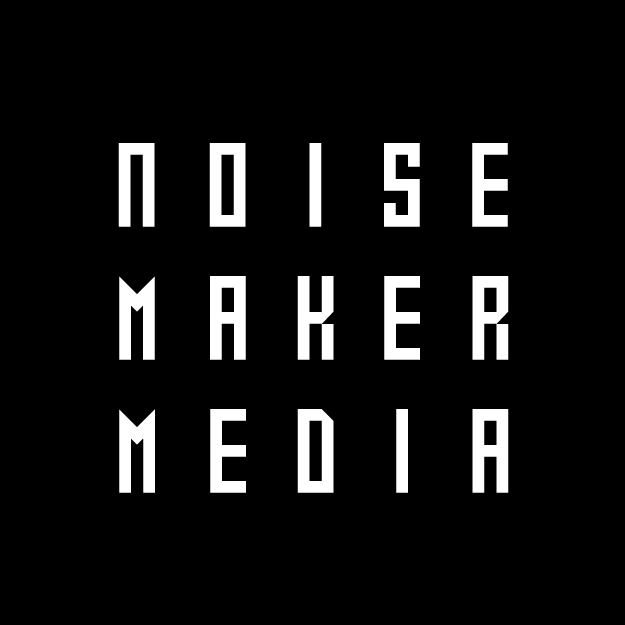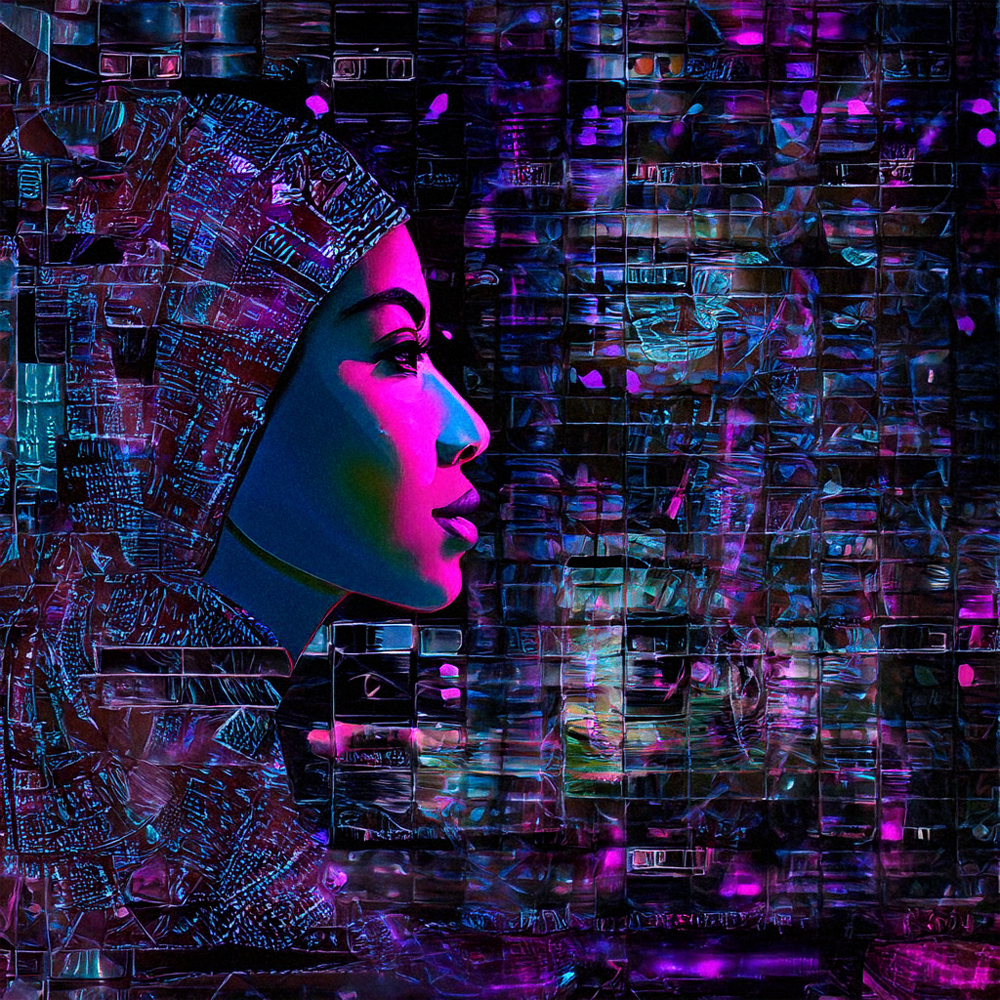Content Killed the Creator: Reclaiming Art from the Illusion of Influence
TL;DR: The creative economy turned artistry into algorithm-driven content, stripping away depth and purpose. This essay calls for a return to intentional, meaningful creation rooted in cultural stewardship.
Creativity is Dead and We Double-Tapped Its Demise
We are living in a paradox: a time when creative tools are more accessible than ever, yet true creativity feels increasingly rare. The so-called 'creative economy' has illuminated both the possibilities and the pitfalls of democratized expression. What began as an opportunity to amplify diverse voices has, in many ways, devolved into an endless loop of content—optimized, replicated, and commodified.
But within this tension lies an invitation. The disillusionment with surface-level creation is a chance to rediscover why we create in the first place. Audiences are not indifferent; they are exhausted by empty spectacle. Institutions, while slow to adapt, are not beyond transformation. And creators, beneath the noise of metrics and trends, still yearn for meaningful work.
This moment calls for clarity. A return to the roots of creativity as a human act of connection, reflection, and cultural stewardship. It is not about rejecting technology or platforms, but about reclaiming agency over how we use them.
Creativity is not dead. It is waiting for those willing to move beyond algorithms and into deeper conversations.
This essay is an offering toward that conversation.
“Platform capitalism does not nurture art. It demands content. Until we disentangle creativity from these exploitative frameworks, we remain complicit in the erosion of artistic integrity.”
What Killed the Creative?
Industrialized Creativity: How Platforms Turn Expression into Extraction
Social media platforms have industrialized creativity. Algorithms dictate taste, privileging volume over depth. The artist becomes a content laborer, trapped in a system that exploits attention while offering only fleeting visibility. This relentless churn suffocates innovation and rewards mimicry.
Every post is commodified. Every idea is reduced to its potential for clicks. Craft becomes irrelevant to platforms obsessed with engagement metrics and user retention. Exploration and intuition are sacrificed for consistency and scale.
As Shoshana Zuboff details in 'The Age of Surveillance Capitalism,' these platforms are not neutral marketplaces but extractive systems designed to monetize human behavior. The creative act, once an expression of individual or cultural voice, becomes raw material for data mining, ad targeting, and infinite scroll.
Jaron Lanier, in 'Ten Arguments for Deleting Your Social Media Accounts Right Now,' critiques how these same platforms manipulate users into addictive loops, reducing creators to unpaid labor feeding a machine indifferent to artistic merit.
This commodification echoes Mark Fisher's observation of 'capitalist realism'—the pervasive sense that there is no alternative to the current system. In creative industries, this manifests as a resigned participation in content cycles that prioritize visibility over substance.
Platform capitalism does not nurture art. It demands content. Until we disentangle creativity from these exploitative frameworks, we remain complicit in the erosion of artistic integrity.
“Until we value depth over convenience, the creative process will remain trapped in this shallow cycle of perpetual beginners.”
Expertise Fetishism: Death by Tutorial
The rise of micro-learning has been hailed as democratizing knowledge, offering bite-sized lessons designed for the distracted mind. But is this truly learning? Or has it become a convenient facade that dilutes complexity in favor of instant utility?
In the creative space, micro-learning feeds the illusion of mastery. Creators consume endless tutorials promising 'quick hacks' and 'five-minute skills,' mistaking content consumption for craft. The pursuit of artistic depth is reduced to a series of templated solutions, optimized for speed, not understanding.
True learning demands immersion, struggle, and critical reflection. It requires time—something the micro-learning model systematically erodes. By prioritizing efficiency over depth, we foster a generation of creators fluent in tools but illiterate in meaning.
This fetishization of micro-expertise encourages conformity. Innovation withers when process is reduced to a checklist. The sacred messiness of discovery is replaced by the sterile repetition of best practices. What remains is a hollow simulation of creativity—fast, consumable, forgettable.
Until we value depth over convenience, the creative process will remain trapped in this shallow cycle of perpetual beginners.
Culture As A Mood Board, Not A Living Memory
Gen Z has grown up immersed in a hyper-connected world where culture is consumed in fragments. TikTok trends, Pinterest boards, and Instagram aesthetics replace deep engagement with cultural history. But in this constant stream of content, lineage is often lost. What remains are surface-level signifiers stripped of their original meaning.
Consider the widespread resurgence of Y2K fashion or the aestheticization of ‘90s Hip Hop culture. For many Gen Z creators, these are visual motifs rather than cultural movements rooted in resistance, community, and socioeconomic struggle. The low-rise jeans, Airbrush graphics, and flip phones are curated for nostalgia, but detached from the socio-political context that birthed them. The same applies to the casual appropriation of AAVE (African American Vernacular English) as internet slang, used without acknowledgment of its Black origins and the histories of marginalization it carries.
This aesthetic sampling is not inherently malicious, but it reveals a dangerous pattern: culture as a mood board, not a living memory. Platforms accelerate this amnesia by prioritizing viral aesthetics over cultural literacy. What was once sacred becomes spectacle. What was once a symbol of identity becomes an accessory.
We see this vividly in the commodification of indigenous designs in fast fashion, where symbols of spiritual and communal significance are repurposed as seasonal trends. Or in the recent “coquette” aesthetic trend, which romanticizes hyper-femininity while ignoring its historical ties to both oppression and subversion in women’s movements.
Culture demands stewardship, not sampling. It requires patience, context, and reverence. When creators sever ties with their ancestry, they produce work that may be visually compelling but lacks resonance and weight. Their creations become ornamental—pretty but powerless.
If creativity is to regain its cultural integrity, creators must move beyond aesthetic appropriation and commit to ancestral reclamation. Only then can art reclaim its role as a vessel of memory, identity, and resistance.
“We have lost the patience to sit with difficult truths. We have neglected the responsibility to honor the histories behind the aesthetics we consume. We have compromised the integrity of creative labor, reducing it to content meant for fleeting applause.”
We Are All Complicit
The decay of creativity is not merely the fault of platforms or institutions. It is a mirror reflecting our own choices. Audiences have prioritized ease over engagement, scrolling through content without demanding context or depth. Institutions, driven by market pressures, have retreated into the safety of mass appeal, avoiding the risk of challenging art. Creators themselves, seduced by visibility, have abandoned the discipline of craft for the vanity of influence.
We see this complicity play out in cultural moments like the rise of “main character syndrome,” where individuals curate their lives for social consumption, reducing lived experience to a performance. The performative allyship of 2020, when brands and influencers posted black squares during the Black Lives Matter protests without engaging in meaningful activism or systemic change, exemplifies how surface-level gestures have replaced substantive engagement.
Another reflection of this is the rapid commercialization of Pride Month, where corporations flood social media with rainbow logos while supporting policies or politicians that undermine LGBTQ+ rights. These acts reveal a collective willingness to settle for symbolic representation over genuine advocacy.
But this complicity carries a deeper regret: we have allowed convenience to replace connection. In seeking constant stimulation, we have diminished our capacity for reflection. By rewarding mimicry, we have stifled innovation. We must ask ourselves: what have we lost in this exchange?
We have lost the patience to sit with difficult truths. We have neglected the responsibility to honor the histories behind the aesthetics we consume. We have compromised the integrity of creative labor, reducing it to content meant for fleeting applause.
Regret, however, is not enough. It must be transformed into accountability. We must acknowledge our role in perpetuating a system that rewards the hollow over the honest. Until we make this reckoning personal—until we demand more from ourselves as consumers, creators, and cultural participants—this cycle of dilution will persist.
Our complicity does not condemn us. But it does obligate us to choose differently.
“To rediscover purpose is to reclaim agency. To create with deliberate urgency, not reactive necessity.”
The Way Forward: Reclaim, Rebuild, Resist
Rediscover Purpose
Purpose is not a marketing angle. It is the foundation of meaningful creative work. In a landscape dominated by algorithms and performance metrics, rediscovering purpose requires creators to ask a difficult question: Why am I making this, and for whom?
Consider Ava DuVernay, whose commitment to telling underrepresented stories led to works like '13th' and 'When They See Us.' Her purpose is not defined by trends but by a long-standing dedication to justice and visibility for marginalized communities. Similarly, Tyler, The Creator built an entire creative universe grounded in his personal vision, rejecting industry norms to cultivate a loyal audience that values his authenticity.
In music, Kendrick Lamar’s 'To Pimp a Butterfly' was a deliberate departure from mainstream expectations, rooted in cultural critique and personal introspection. Its critical acclaim and cultural impact were the result of an unwavering commitment to purpose over commercial predictability.
These examples illustrate that rediscovering purpose is not about abandoning audiences but about leading them into deeper conversations. Purpose clarifies intention. It demands that we create work that speaks to something larger than engagement metrics—a truth, a question, a call to reflection.
To rediscover purpose is to reclaim agency. To create with deliberate urgency, not reactive necessity.
Reclaim Cultural Roots
Reclaiming cultural roots is not an exercise in nostalgia. It is a deliberate act of resistance against cultural homogenization. In a digital landscape where trends spread faster than their origins can be understood, reconnecting with one's lineage becomes a political and creative imperative.
Examples of this reclamation are emerging across disciplines. The revival of Indigenous storytelling through contemporary film and literature, as seen in the works of artists like Sterlin Harjo with 'Reservation Dogs' and authors like Tommy Orange, exemplifies how creators are reclaiming narratives long distorted by mainstream media. These works are not mere representations but acts of cultural continuity, challenging erasure and re-centering Indigenous voices.
Similarly, in music, artists like Rina Sawayama weave their diasporic identities into pop frameworks, challenging the industry's tendency to flatten non-Western narratives. Her work becomes a bridge between personal history and global pop culture, embodying how reclaiming roots can produce fresh, resonant art.
In fashion, brands like Wales Bonner and Pyer Moss infuse their collections with historical and cultural references, using the runway as a space to educate, honor, and challenge dominant narratives. Their designs do not sample culture; they converse with it.
This reclamation requires humility. It demands research, dialogue with elders, and the courage to challenge appropriative practices. Rooted art cannot be fabricated through mood boards. It must be lived, honored, and continually interrogated.
Reclaiming cultural roots is not a trend. It is a necessary return to depth, ensuring that creativity remains a vessel of memory, identity, and resistance.
Build New Systems
The creative economy's dependence on exploitative platforms necessitates alternative infrastructures. Building new systems means creating spaces that prioritize depth, collaboration, and process over virality.
Successful models exist across industries. Consider Bandcamp, which offers musicians a sustainable alternative to streaming giants by enabling direct artist-to-fan support. Patreon has empowered creators across disciplines to build independent communities, free from algorithmic constraints. Even Substack has redefined publishing by allowing writers to monetize their audience through subscription, fostering a renewed focus on thoughtful, long-form content.
In the film world, A24 emerged as a disruptive force by championing visionary directors and riskier narratives, proving that independent, artist-driven cinema could thrive outside the Hollywood blockbuster model. Similarly, independent game studios like Supergiant Games have shown how small, creatively autonomous teams can achieve critical and commercial success with titles like 'Hades'—a far cry from the franchise-driven priorities of major publishers.
These examples illustrate that building new systems is not a utopian dream. It is a practical necessity. Community-driven platforms, artist cooperatives, and alternative patronage models can reorient creative labor toward sustainability and integrity. They resist the extraction-driven logics of platform capitalism and foster environments where experimentation is valued and failure is embraced as part of growth.
Reclaiming local spaces for cultural production is equally vital. Decentralizing creativity from corporate-owned platforms to community-rooted initiatives ensures that cultural narratives remain diverse, nuanced, and authentic.
Only through such ecosystems can artists nurture meaningful work beyond the fleeting attention of algorithmic feeds.
“The future of creativity depends on structures that resist exploitation and celebrate process.”
Protect the Amateur Spirit
In a culture obsessed with professionalization and monetization, the amateur spirit remains one of the last bastions of authentic creativity. The amateur creates not for the market, but from a place of genuine curiosity, necessity, and love. This is where true innovation often begins.
Consider the early days of Hip Hop, born from block parties in the Bronx, where DJs and MCs, far from being polished professionals, experimented out of passion and community. Or the punk movement, where bands with minimal formal training built an entire cultural revolution through DIY ethos and raw expression. These moments remind us that some of the most impactful art comes from those unconcerned with commercial polish.
Today, platforms like YouTube and SoundCloud have given rise to bedroom producers, self-taught filmmakers, and grassroots creators who, unburdened by institutional expectations, push boundaries in ways traditional systems often suppress. The amateur’s freedom from industry metrics allows for experimentation that is often more honest, more daring, and more culturally resonant.
To protect this spirit is to preserve the very essence of creativity: human, imperfect, and necessary. It means creating spaces where exploration is valued over perfection, and where the joy of making is not overshadowed by the pressure to monetize.
We must architect ecosystems that prioritize depth over reach. that prioritize depth over reach. Community-driven platforms, artist-led collectives, and alternative economies can nurture meaningful work. The future of creativity depends on structures that resist exploitation and celebrate process.
Conclusion: Let the “Creative” Die, Let Creativity Live
Despite the challenges we face, this is a moment of profound opportunity. The illusion of the 'creative' as mere content-maker is dissolving, making space for something more enduring and meaningful. What comes next is up to us.
True creativity is rooted in curiosity, connection, and care. It thrives when we slow down, when we listen deeply, and when we choose substance over spectacle. The reclamation of creative integrity begins not with grand gestures, but with everyday acts of intention: making work that resonates, honoring the histories we draw from, and fostering communities that celebrate depth.
This is not a call to reject technology or audience engagement. It is an invitation to reimagine how we use these tools to amplify stories that matter, to preserve cultural memory, and to challenge narratives that flatten our shared humanity.
Creativity is, at its core, an act of hope. Every meaningful work, every bold idea, every act of cultural stewardship pushes against the tide of commodification.
So here is your invitation:
Creators: Craft with conviction. Let your work be an offering, not a product. Audiences: Seek out the thoughtful, the challenging, the meaningful. Institutions: Invest in depth, nurture process, and honor creative labor.
Together, we can rebuild a culture where creativity is not content, but connection.
Let creativity live.







